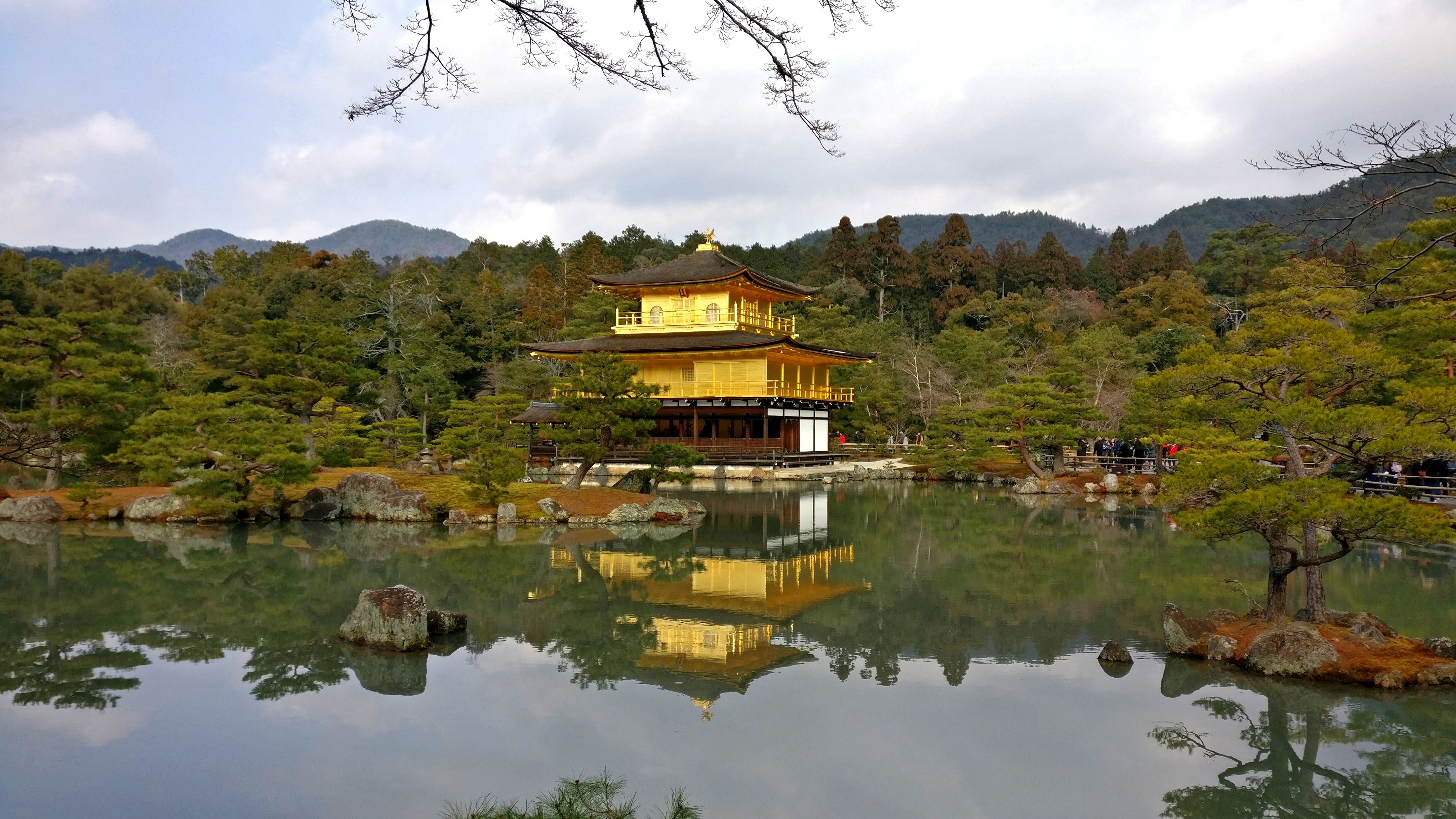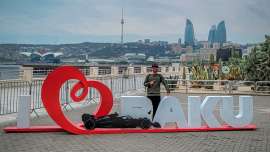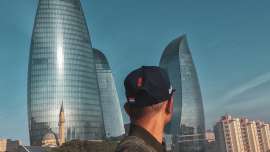I took the Nozomi shinkansen train from Hiroshima and it took me 1 hr and 30 minutes to reach Kyoto. Kyoto is well connected to Osaka and Nara via JR rail. Kyoto is famous for Buddhist temples, Shrines and palaces and the city was capital of Japan for almost 1000 years. Kyoto is one of the most visited tourist destinations in Japan and the city has significant presence in Japanese history and culture. You need at least 2 days in order to visit all the popular shrines and temples around Kyoto. All the major tourist destinations are well connected by local buses. I used Google maps extensively during my trip to japan and it was really helpful in navigating among different tourist spots around Kyoto. I would strongly advice against joining group tours because the tours are usually over expensive and you will not cover all the important locations during your trip.
Arashiyama– Arashiyama is famous for Bamboo groves. It takes about 20 minutes to reach Saga-Arashiyama station from Kyoto station via JR Sagano Line. Arashiyama is located at the outskirts of Kyoto city and it is located far from other tourist attractions. It takes about 10 minutes to reach the Bamboo groves walking path from Saga Arashiyama station. I would strongly advice to visit Arashiyama early morning because the group tours start arriving at Arashiyama after 9 am and it gets really crowded around the walking path The empty walking paths in between the bamboo groves look amazing and you can also ride bicycle around the compound. I purchased some handicraft items made from bamboo tree from the shopping street located near the entrance.


Kinkaku Ji – Kinkaku Ji is the most famous tourist attraction in Kyoto. There are direct buses available from Kyoto station to Kinkaku Ji temple. It was the most crowded tourist spot during my trip to Kyoto. The temple is surrounded by a pond and the top two floors of the temple is completely covered with gold. Tourists are not allowed to enter inside the temple and the temple was looking beautiful from the walking path situated around the pond. The entire walking path was very crowded and there were lot of people queuing up for photographs.
I will strongly recommend to visit the place during sunny day because the sunlight reflects upon the gold casting dazzling flashes of light. Kinkaku Ji is also known as Golden Pavilion.


Ginkaku Ji – Ginkaku Ji is a Zen temple located in Kyoto and the architecture of the temple is similar to Kinkaku Ji temple. Ginkaku Ji is also known as Silver Pavilion. The temple compound consists of ponds, temple buildings and gardens. I visited the temple during afternoon time and the place was less crowded compared to Kinkaku Ji temple. The temple compound was really beautiful and i loved walking around the temple garden. Tourists are not allowed to enter inside the main temple of Ginkaku Ji.

Nijo Castle – Nijo Castle is situated near Kyoto Imperial Palace. The castle is designated as a UNESCO world heritage site. The castle consists of three main areas: Main circle of defense(Honmaru), Secondary circle of defense(Ninomaru) and gardens surrounding the castle compound. Tourists are not allowed to enter inside the main building of the castle. Ninomaru Palace is situated just near the entrance of the palace and it is a major tourist attraction of the castle. During my visit to the castle Honmaru Palace was open to the public and i was able to visit the beautiful Honmaru garden and buildings inside the compound. There are lot of cherry blossom trees around the Nijo Castle garden compound and the castle is a major tourist destination during cherry blossom festival.






Kyoto Imperial Palace- Kyoto Imperial Palace is located inside the Kyoto Imperial Park. Until 1868 Kyoto Imperial Palace was the residence of the Japan’s Imperial family. Tourists are prohibited to enter the main compound of the Imperial palace. The Palace compound is rectangular in shape and it is surrounded by walls. The length of the North-South section of the wall is around 1300 m and the length of the East – West section is around 700 m. I walked along two sections of the park but it was very difficult to distinguish all the sections because they looked exactly the same. Kyoto Imperial Palace is not a popular tourist destination in Kyoto. During my visit to the palace the palace compound was almost empty and i was really bored after walking around the compound for an hour. Most tourists are not interested to visit the palace because they don’t allow entry to the main building. The garden surrounding the main building was just ordinary and there was nothing special about it. The Imperial Palace is a great place to get out of hustle-bustle of the Kyoto city. The Palace might attract people who are interested to photograph vast empty landscapes.




Kiyomizu-dera- Kiyomizu-dera temple is a Buddhist temple located in Kyoto and it is a part of UNESCO world heritage site. The main hall of the temple is situated just besides the hill and the view of the Kyoto city is amazing from the viewing area. The temple compound also features several other shrines and pagodas. From the main road you have to walk uphill for about 30 minutes in order to reach the main gate of the temple. The uphill path is full of shops selling local handicrafts, local snacks and souvenir items. You will see lot of people wearing traditional Japanese dress during the visit to the temple. The main hall of the temple is famous for its unique architecture and the outside part of the temple was under renovation during my visit to the temple. I would strongly recommend to visit the temple during afternoon time because the temple is considered as one of the best place in Japan to view sunset. The Goddess of mercy is worshiped at the Kiyomizu-dera temple and it is the most famous tourist destination in Kyoto.




Fushimi Inari Taisha – Fushimi Inari Taisha is a Shinto shrine located in Kyoto. The shrine is dedicated to the God of RIce and Sake and it was built in the 8th century. The Shrine is famous for trails made by thousand small Torii gates. I saw number of fox statues around the temple compound because foxes are considered as the messenger of Inari. This was my last stop in Kyoto before catching a train to Nara. A giant Torii gate is situated in front of the main hall of the Shrine. The temple compound is also famous for mountain trails. The trail starts just behind the main building and you have to cross a path made by thousand Torii gate. It was a great place to take some nice photos and i visited the place early morning so the shrine was not that crowded. It takes about 2-3 hours to do the entire mountain trail. I didn’t do the whole mountain trail and i returned back to the main gate after spending an hour at the shrine.





Heian Shrine- Heian shrine is a Shinto shrine and it was built on the 1100th anniversary of the capital’s foundation in Kyoto. Japan’s biggest Torii gate is situated by just 500 m from the Shrine. The shrine compound consists of a huge open court at the center and a garden. The garden is a popular tourist attraction during cherry blossom season. You have to pay a small entrance fee in order to enter the garden. The Shrine garden is also featured in famous Hollywood movie “Lost in Translation”. Every year the shrine hosts Jidai festival which is a celebration of the foundation of Kyoto.







Leave a Reply